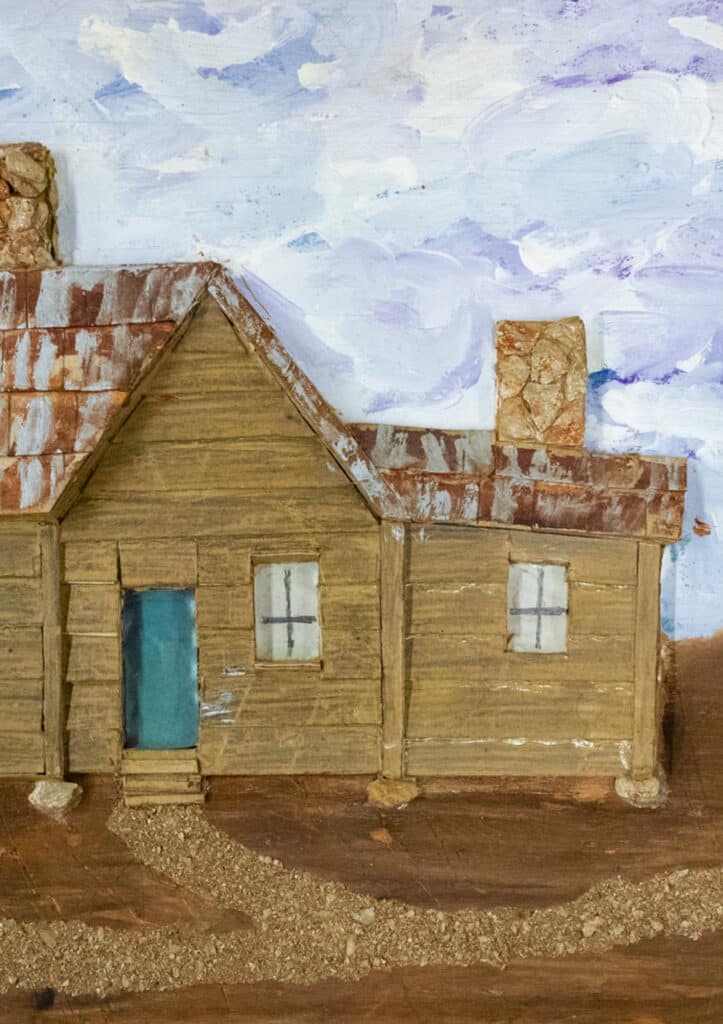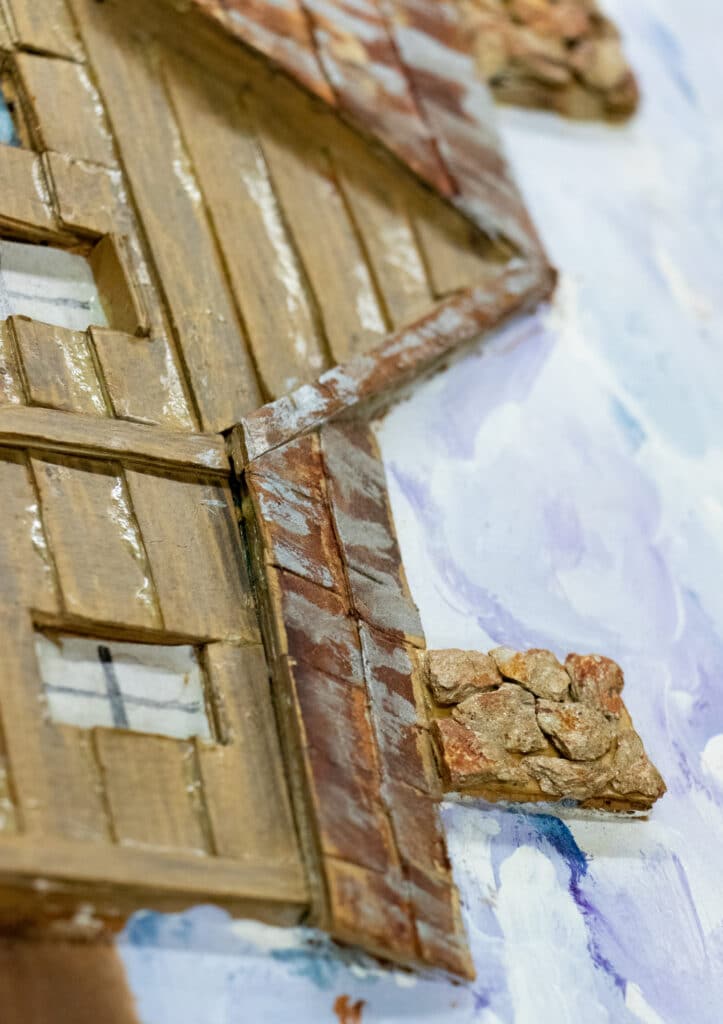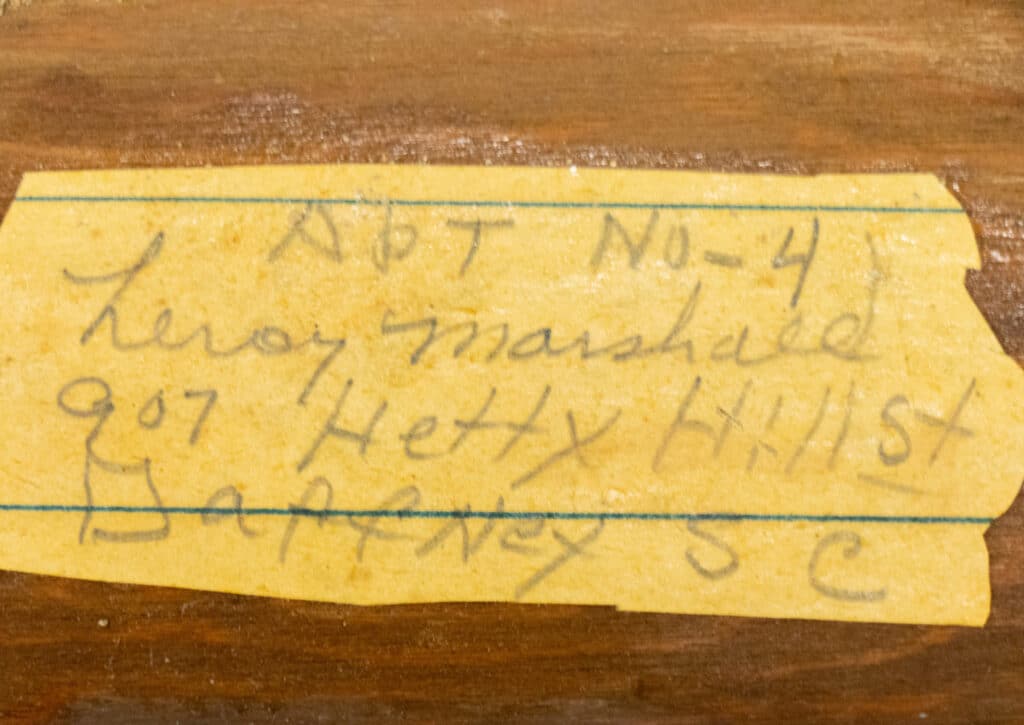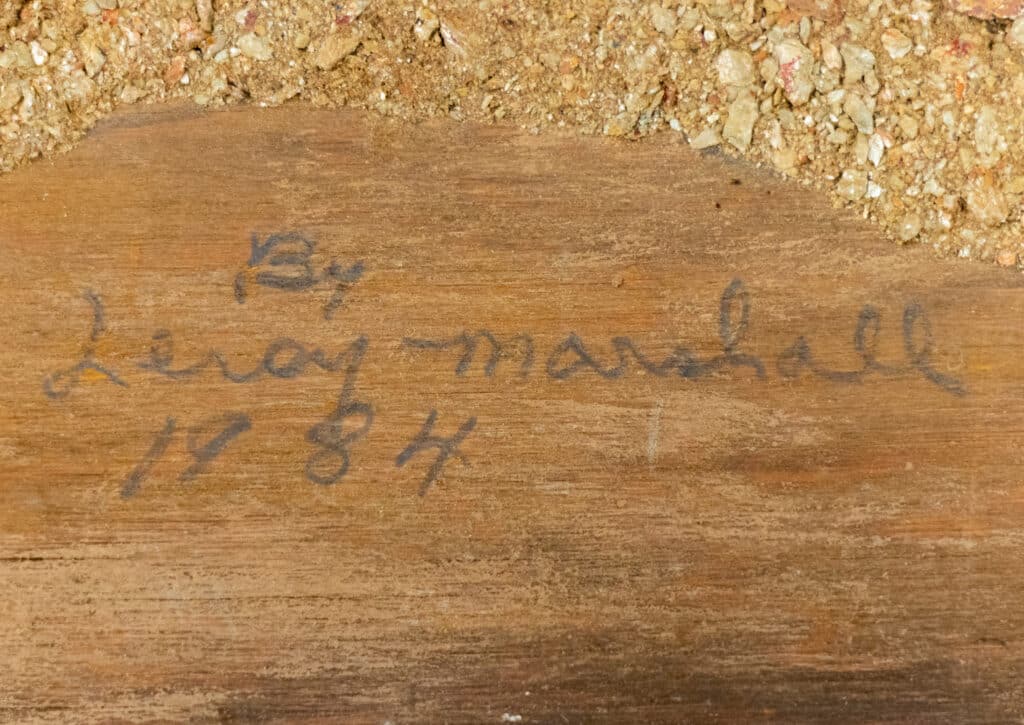about the work
This “Rusty Tin Top House” is the largest Leroy Marshall piece in SAM’s collection. As with many of Marshall’s “three-dimension pictures”, as he referred to his art style, a single log cabin is the focus of the composition. The cabin, made of meticulously trimmed and pasted cardboard planks, is topped by cardboard shingles, dry-brushed with metallic silver and burnt orange paints to give the effect of rusted metal. Perched like crowns atop the roof are twin chimneys, crafted from small bits of stone; stones can also be found supporting the foundation of the cabin as well as lining a gravel walkway that extends from the cabin doors to either side of the composition.
Viewers can infer from the bare tree branches and barren brown soil that this depicts a winter scene. Cool blues, purples, and whites swirl through the sky, perhaps signaling of a snow to come.
about the artist
Leroy “Art” Marshall was a self-taught artist who lived in Gaffney, South Carolina. A gun violence incident in 1966 caused Marshall to become paralyzed from the waist down; over 150 operations and a series of following health issues led to one leg being amputated in 1980.
Marshall turned to making art as a way to pass the time in the hospital, using any and all materials brought to him by friends, family, and nurses. He was inspired to create an image of the farmhouse across the street from his home, which started his beloved series of mixed media cabins, which he called “three dimension pictures.” With each piece, he experimented with new techniques, such as how to layer small wood chips as shingles, or using crushed stones and gravel for textural chimneys. “I spend about five or six hours on each one,” he said, “and I don’t know how many I’ve given away over the years.”
Marshall’s art was championed in Spartanburg by art teacher and fellow artist Doris Turner, who encouraged the Spartanburg Arts Center to host a solo exhibition of his work in September 1986. Marshall attended a reception in his honor and sold more than a dozen pieces during this show. His untimely passing in 1988 cut short his blossoming art career.
In addition to the Spartanburg Art Museum’s Permanent Collection, Marshall’s work can be found in the State Art Collection.





